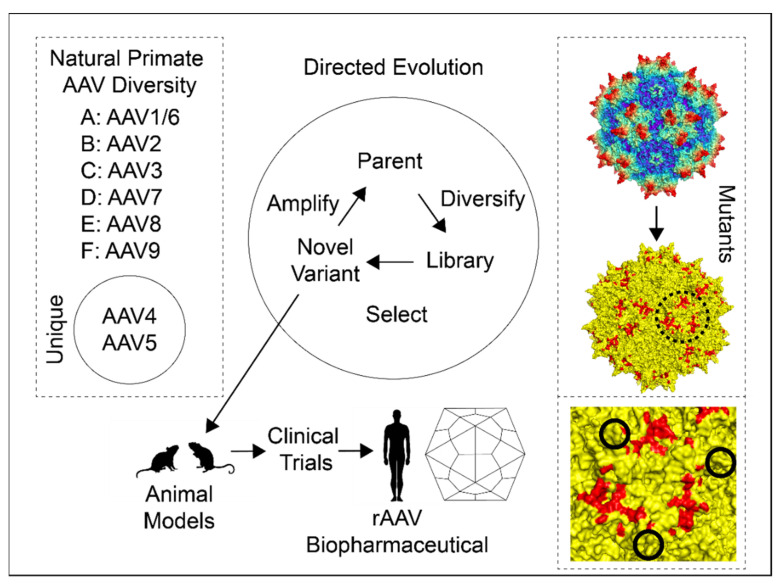Figure 3.
Capsid modification strategies. The three major approaches to capsid modifications are, from left to right: natural diversity (left dashed line box), directed evolution (middle), and mutants (right dashed line box). Natural primate AAV diversity includes the major and unique AAV clades. Directed evolution begins with parental serotypes, and these are diversified via recombination-based techniques (see text for details). This creates an AAV library that can be screened with selection of novel variants. Novel variants can then be amplified for additional rounds of selection or tested in animal models as a candidate rAAV biopharmaceutical. The mutants box consists of an AAV2 60-mer corresponding to Figure 2a at the top and a mutated yellow AAV2 60-mer at the bottom with mutations highlighted in red. The dashed-line circle surrounds the 3-fold axis, and a close-up view of this region is shown in the bottom right dashed box. Solid line circles show the peaks of each axis and the 3-fold depression is in the center. The three ~3.5 nm diameter red patches are “dead zones” first identified in Lochrie et al., 2006 [118]. Comparison of the top and middle models shows that the dead zone is mostly on a plateau between spikes where the PKD2 domain is bound in the AAV2-AAVR complex [119,120]. A summary of these mutations and others is provided in Supplementary Table S1. Structures were prepared using PyMOL [66].

